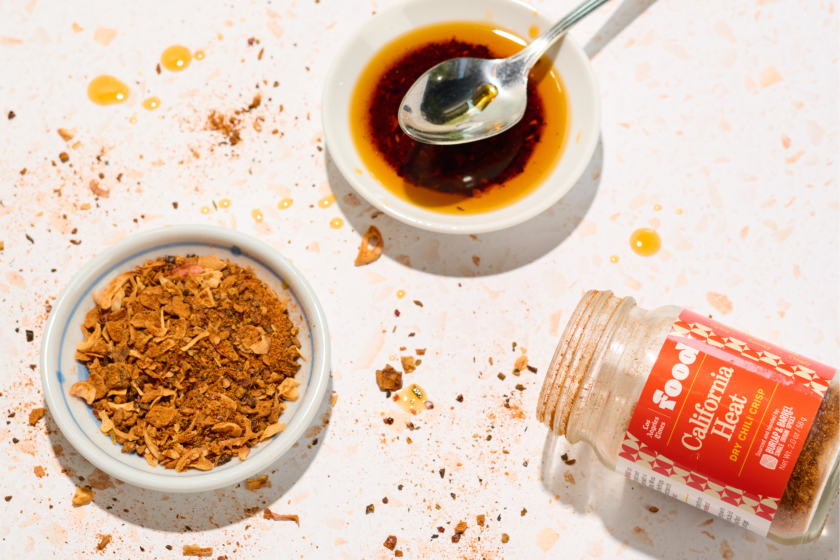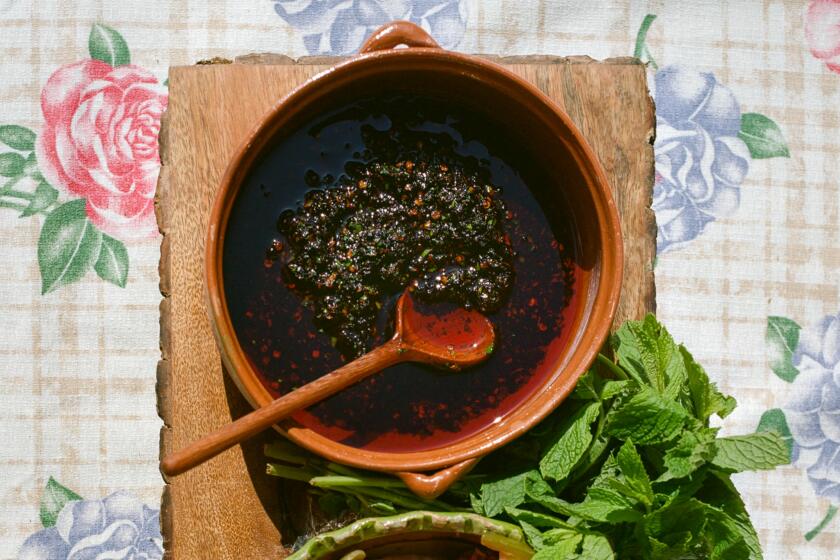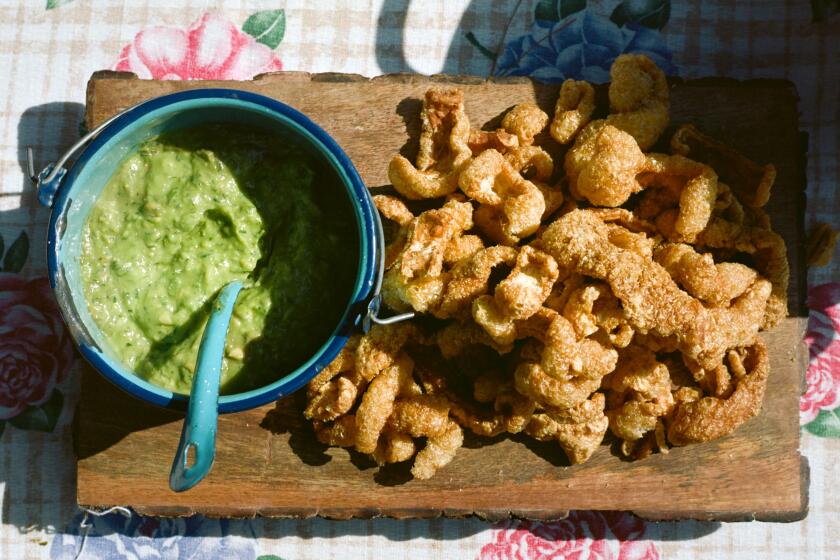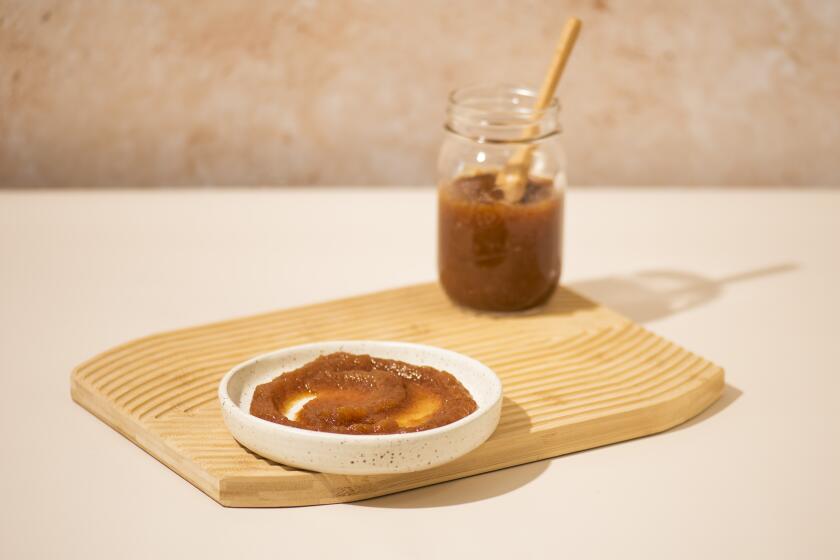Red-Eyed Meat Marinade

I wander around these days enveloped in the distinct odor of burning wood. People have been remarking on it, and I apologize to any who are offended. Smoke just stays with you, and I’ve been obsessed with smoking food lately.
I wasn’t always this way. When I was a kid, I used to make my own custom hamburger sauce out of every condiment in the cupboard, and one day I ill-advisedly put a whole tablespoon of liquid smoke into the mix. When I tasted it, I gagged violently. It was years before I could stand the taste of smoke again.
My recovery was gradual. After college, I cooked on cheap little hibachis and supermarket barbecues. Then I moved up to a Weber kettle, and once in a while I’d throw in some moistened wood chips or trimmings from my apricot tree for variety.
Those were the days when I still thought barbecuing was just a pleasant way to cook out of doors. But I’d had a faint glimpse of the possibilities of smoking instead of merely grilling--like commanding a mighty Wurlitzer of flavor creation, as compared to plunking on a piano.
I bought a 50-gallon oil drum barbecue and installed a thermometer on it for more accurate cooking. The maker told me how I could smoke in it by keeping the temperature around 250 degrees and putting the meat at the other end of the drum from the coals, so I got a metal wood chip holder and smoked a few chickens, even the occasional brisket.
Then I got a gas grill for the convenience, thinking it was the next step up, but I’ve never used it very much. Looking back, I can see the reason; like most gas grills, mine is almost impossible to keep cool enough for smoking. Without realizing it, I had come to see smokiness as an essential feature of barbecue, a rich spectrum of added flavor with a primeval appeal.
Two months ago, I came upon an electric smoker: the Smokette II, made by Cookshack of Ponca City, Okla. Before I knew what I was doing, I’d written out a check for $425 plus shipping. A couple of weeks later it arrived on my doorstep: a solid, chunky, 88-pound metal box that looks sort of like a bar refrigerator with an oven-type dial on top. At last, I could smoke a whole brisket without having to mother the coals all day.
I realize many barbecuers actually treasure the hours they spend tending their smokers. It’s a meditative thing, like fishing. For others, it’s guy time--a convenient excuse to socialize all afternoon with their buds, but without having to think they’re just killing time like the gang at “Cheers.”
Fine for them, but I’m neither that meditative nor that sociable. I have accepted these flaws, and I just want a smoker that can run itself. One I can stoke with hardwood, switch on and leave.
Now that I have one, I’ve gone kind of smoke-crazy. I’ve smoked wonderfully moist chicken and brisket. I’ve smoked steak, which seemed an extravagant idea, somehow, but it was sure good. Ribs and pork shoulder? You bet. I’ve even smoked a prime rib.
I’ve smoked leg of lamb. I’ve smoked rack of goat (five hours at 225 degrees, and I strongly recommend trimming the exterior fat). I’ve smoked salmon. I’ve smoked bologna--you have to find chub bologna, rather than the sliced kind, but it comes out like a giant smoky hot dog.
I’ve smoked hard-boiled eggs, which had a good, surprisingly subtle smoke flavor, when you consider that they’d spent an hour in hickory smoke. It turns out there’s a tradition of smoking eggs. I’ve also smoked olives, another traditional thing. They dried out a little, but the flavor was attractive.
I’ve smoked jalapenos, making my own chipotle peppers; they took a long time and I decided they were more trouble than they were worth. I’ve smoked sliced mushrooms, which came out smoky enough but also rather chewy. Fortunately, they softened up after a night in balsamic vinegar.
I’ve smoked eggplant, on the theory that since everybody likes the smoky note in the Middle Eastern eggplant dip baba ghannouj, smokier would be better. It was. Experience quickly taught me the long Asian eggplant is better for smoking than slices of the usual American globe eggplant, which tend to fall through the grill.
I’ve smoked mild olive oil with mildly interesting results. Mustard, on the other hand, is an undeniable success, and I’m going to smoke mustard on a regular basis from here on out.
I’ve even smoked fruits. Smoked apples are traditional in England, but I wasn’t very impressed with my result (like eating a baked apple downwind of a brush fire). Pears came out a little better, because they were juicier. Pineapple was better still, so I tried bananas, which turned out to be really terrible. To the hippies of 1967 I can authoritatively say: Smoking bananas just doesn’t work.
I’ve read that the Chinese were fond of black smoked apricots during the Tang dynasty. After my banana experience, though, I’m not going there. (What did they smoke them on, anyway? Cypress, camphor wood, tea leaves?) And until I become an obsessive home brewer, I’ll forget about making smoked malt, which is what the Germans use for rauchbier.
Through all this, I have been picking up things experienced smokers have long known. For instance, that meat stops accepting any more smoke flavor when its internal temperature reaches 140 degrees or so. That’s why you don’t need to add more hardwood chips toward the end of cooking, and it also means that for maximum smoke flavor you should put meat in the smoker cold, straight from the refrigerator.
As a lot of barbecuers report, there seems to be a plateau in cooking larger cuts. When the meat reaches around 170 or 180 degrees, its internal temperature often sticks there for anything from 45 minutes to two hours. Food science writer Harold McGee suggests this might be because one of the major muscle proteins, actin, doesn’t denature (soften) until that temperature, and it may be sucking up the thermal energy.
Somehow, nobody had ever told me that you should always remove the translucent membrane from the inner side of a rack of ribs before cooking it. That way the meat picks up more flavor from the spice rub and comes out smokier, and you also don’t have to chew away at the membrane when it’s done. Fortunately, it’s pretty easy to remove--you insert a butter knife between the membrane and the meat and work your way up and down the rack, lifting and pulling until it comes off.
On my electric smoker, I can set the temperature for 225 degrees, which makes for very moist and tender meat. But this doesn’t always brown the surface as much as I like, and I often throw the meat (particularly chicken) onto one of my other barbecues for a few minutes afterward. So I’m not giving up on them, even in my current smoke mania.
Larousse Gastronomique says meat should be cured in brine before it’s smoked. Of course, Larousse is thinking of smoking as a preservative method, and actually, it’s kind of the other way around. It’s smoking that’s necessary for brine-cured meats, because it keeps their fat from turning rancid.
But none of that concerns me. For this cowpoke, smoking is the complete reverse of a preservative. Nothing that tastes so good lasts very long around me.
Place the coffee, onions, soy sauce, white wine, orange juice, molasses, salt and pepper in a blender and process, in batches if necessary.
Get our Cooking newsletter.
Your roundup of inspiring recipes and kitchen tricks.
You may occasionally receive promotional content from the Los Angeles Times.















